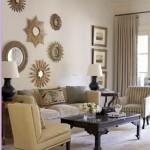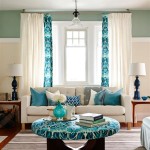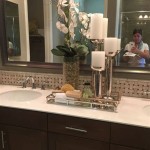How to Decorate an Attic Bedroom
Attic bedrooms present a unique set of design challenges and opportunities. Characterized by sloped ceilings, limited natural light, and often unconventional layouts, transforming an attic into a comfortable and stylish bedroom requires careful planning and creative execution. This article will explore key considerations and practical strategies for successfully decorating an attic bedroom, maximizing its functionality and aesthetic appeal.
Understanding the Attic Space and its Limitations
Before embarking on any decoration project, a thorough assessment of the attic space is crucial. This involves understanding the physical limitations imposed by the architecture and identifying potential areas for improvement. Key factors to consider include ceiling height, structural elements, and accessibility.
Ceiling Height: The height of the ceiling is a primary determinant of the overall feel of the room. Areas with very low ceilings can feel cramped and uncomfortable. Building codes often dictate minimum ceiling heights for habitable spaces, and these regulations must be adhered to. In sections where the ceiling is low, consider placing storage or low-profile furniture. Areas with higher ceilings can be emphasized with taller furniture and decorative elements. Strategically placing furniture away from the lowest points can help create a more open and airy atmosphere.
Structural Elements: Attics often contain exposed beams, support columns, and other structural elements that can impact the layout and design. Rather than attempting to conceal these elements, consider incorporating them into the design. Exposed beams, for example, can be stained or painted to become a focal point, adding character and architectural interest. Columns can be integrated into room dividers or used to define different zones within the space. It's imperative to consult with a structural engineer or experienced contractor before making any modifications to load-bearing elements.
Accessibility: Accessing an attic can sometimes be challenging, particularly if the staircase is narrow or steep. This can impact the types of furniture and materials that can be brought into the space. Consider the size and weight of furniture items and whether professional movers are necessary to navigate the access point. Furthermore, think about the long-term accessibility of the attic. If the room is intended for a child or someone with mobility limitations, accessibility improvements, such as a wider staircase or a lift, may be necessary.
Insulation and Ventilation: Attics are notoriously susceptible to temperature fluctuations. Adequate insulation is paramount for maintaining a comfortable living environment and reducing energy costs. Proper ventilation is equally important to prevent moisture buildup and the growth of mold and mildew. Consider upgrading the insulation in the walls, ceiling, and floor to ensure efficient temperature regulation. Install ventilation systems, such as roof vents or gable vents, to promote airflow and prevent moisture-related problems.
Natural Light: Attics often suffer from a lack of natural light. Maximizing the available light is essential for creating a bright and inviting space. Install skylights or dormer windows to bring in natural light and offer views of the outdoors. If structural modifications are not feasible, consider using light-enhancing paint colors and strategically placed mirrors to reflect and amplify the existing light. Additionally, carefully chosen window treatments can help control the amount of light entering the room, preventing glare and heat gain.
Planning the Layout and Functionality
Once the limitations of the attic space are understood, the next step is to plan the layout and functionality of the bedroom. This involves determining the placement of key furniture pieces, such as the bed, dresser, and desk, and defining different zones within the room.
Bed Placement: The bed is typically the focal point of a bedroom, and its placement should be carefully considered. In attic spaces with sloped ceilings, positioning the bed against a lower wall can maximize headroom and prevent occupants from feeling cramped. Alternatively, the bed can be placed under a skylight to create a relaxing and visually appealing sleeping area. Consider the orientation of the bed in relation to windows and doorways to minimize drafts and ensure privacy. A good rule of thumb is to avoid placing the headboard directly under a window, as this can make the room feel less secure.
Storage Solutions: Limited space often necessitates creative storage solutions. Built-in storage units, such as shelves and drawers, can maximize space and provide a streamlined look. Utilize the often-overlooked space under the eaves by installing custom storage cabinets or shelving. Consider using vertical storage solutions, such as tall bookshelves or wall-mounted organizers, to take advantage of vertical space. Opt for furniture pieces with built-in storage, such as a bed frame with drawers or a storage bench, to further maximize space.
Defining Zones: In larger attic bedrooms, consider defining different zones for sleeping, relaxing, and working. Use furniture placement, area rugs, and lighting to visually separate these zones. For example, a desk and chair can be placed near a window to create a dedicated workspace, while a comfortable armchair and a reading lamp can create a cozy reading nook. Using room dividers, such as screens or bookcases, can further delineate these zones and create a sense of privacy.
Traffic Flow: Ensure that the layout allows for easy and comfortable traffic flow throughout the room. Avoid placing furniture in areas where it will obstruct pathways or create bottlenecks. Maintain adequate space between furniture pieces to allow for easy movement. Consider the placement of electrical outlets and light switches to ensure convenient access from all areas of the room. A well-planned layout will enhance the functionality of the space and create a more pleasant living environment.
Selecting Colors, Materials, and Decor
The selection of colors, materials, and decor plays a significant role in shaping the overall aesthetic of the attic bedroom. Light colors, natural materials, and carefully chosen accessories can create a bright, airy, and inviting space.
Color Palette: Light and neutral colors are generally recommended for attic bedrooms, as they reflect light and create a sense of spaciousness. Whites, creams, and light grays are excellent choices for walls and ceilings. Accent colors can be incorporated through furniture, textiles, and accessories. Consider using cool colors, such as blues and greens, to create a calming and relaxing atmosphere. Avoid using dark colors excessively, as they can make the room feel smaller and more enclosed. A monochromatic color scheme, using different shades of the same color, can be effective in creating a cohesive and sophisticated look.
Material Choices: Natural materials, such as wood, linen, and cotton, can add warmth and texture to an attic bedroom. Wooden floors, exposed beams, and natural fiber rugs can create a rustic and inviting atmosphere. Light-colored wood finishes can help to brighten the space and enhance the natural light. Consider using textured fabrics, such as linen or velvet, for bedding and upholstery to add visual interest. Avoid using overly synthetic materials, as they can create a stale and artificial feel. Eco-friendly and sustainable materials are also a good choice, contributing to a healthier and more environmentally conscious living space.
Lighting Fixtures: Appropriate lighting is crucial for creating a comfortable and functional attic bedroom. A combination of ambient, task, and accent lighting is recommended. Ambient lighting provides overall illumination, while task lighting provides focused light for specific activities, such as reading or working. Accent lighting is used to highlight architectural features or decorative elements. Consider using recessed lighting in areas with low ceilings to maximize headroom. Wall sconces and table lamps can provide soft and diffused light, creating a relaxing atmosphere. Dimmable light fixtures allow for adjusting the lighting level to suit different needs and moods.
Window Treatments: Window treatments play a vital role in controlling the amount of light entering the room and providing privacy. Light-filtering shades or curtains can soften the light and prevent glare. Blackout curtains are useful for creating a dark and sleep-conducive environment. Consider using custom-made window treatments to fit the unique dimensions of attic windows. Roman shades, roller shades, and pleated shades are all good options for sloped or unusually shaped windows. Choose fabrics and colors that complement the overall decor of the room.
Accessories and Decor: Accessories and decor can add personality and character to the attic bedroom. Choose items that reflect personal style and create a comfortable and inviting atmosphere. Consider using artwork, mirrors, and decorative pillows to add visual interest. Plants can bring life and freshness to the space. Keep accessories to a minimum to avoid cluttering the room. A well-chosen rug can define a space and add warmth to the floor. Personalize the space with family photos, travel souvenirs, and other meaningful items to create a unique and welcoming environment.
By carefully considering these key points and implementing creative design strategies, an attic can be successfully transformed into a functional and stylish bedroom that maximizes its potential and provides a comfortable living space.

7 Decorating Tips For An Attic Bedroom Sanctuary

37 Ultra Fabulous Attic Room Design Inspirations

14 Tips For Decorating An Attic Awkward Spots And All

25 Smart Ways To Decorate An Attic Bedroom Digsdigs

70 Cool Attic Bedroom Design Ideas Shelterness

Attic Bedroom Ideas Loft Decorating Dakea

6 Cozy Attic Bedroom Ideas 21oak

30 Dreamy Attic Rooms Sloped Ceiling Design Ideas

57 Cool Attic Bedroom Ideas For Inspired Living In 2025 Designs Low Ceiling Angled

Turning The Attic Into A Bedroom 50 Ideas For Cozy Look
Related Posts







